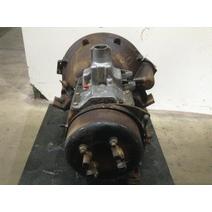

The Muncie, Indiana, plant under New Venture Gear produced the NV4500, NV3500, and NV3550 light truck transmissions. Inside of a 231 New Process Gear transfer case Īfter 124 years in operation, on Thursday, August 24, 2012, New Process Gear ended production and closed their doors for the last time.

The Syracuse New Process Gear plant planned closure in November 2011 was pushed out till first quarter of 2012. In 2009 design and engineering services were moved to Troy, Michigan and Magna International announced its intent to close the Syracuse plant. A downturn in Jeep demand combined with DaimlerChrysler not replacing the Dodge Neon sharply curtailed demand for the Syracuse New Process Gear plant production. This lease arrangement made it difficult to compete with the European manufacturing operation Magna directly purchased located in Roitzsch Germany. Chrysler then leased the facilities to Magna. The New Process gear plant remained property of DaimlerChrysler. Magna purchased the remaining 20% interest in 2007. In 2004, Magna International purchased 80% of New Venture Gear from DaimlerChrysler and put it under Magna Drivetrain. The Syracuse New Process remained with New Venture Gear. The GM Muncie Transmission plant was demolished soon after turnover to the county. Warner Muncie plant closed in mid-2006 after a century of operation and the property was turned over to Delaware County Indiana. GM changed the plant name to "Manual Transmissions Of Muncie". In February 2002, General Motors sold its minority 36% stake in the New Venture Gear company to DaimlerChrysler and the Muncie Transmission plant reverted to GM control. In 1990, the Hydramatic Muncie plant owned by GM and New Process Gear owned by Chrysler formed a joint GM–Chrysler venture called New Venture Gear. In 1954, after a succession of owners including Willys-Overland, New Process Gear became a subsidiary of Chrysler Corporation. The company was renamed New Process Gear to reflect the new corporate direction.

Meachem reorganized New Process Rawhide with one of his partners, Artemus Vosburgh. In the late 1890s New Process Rawhide moved operations to Syracuse after a fire. Meachem founded the New Process Rawhide Company in Baldwinsville, New York. In the 1970s and 80s GM swapped the plant to many different GM divisions ending with Detroit Diesel Allison in 1984 and GM Hydramatic in 1986.

The 1950s and 60s saw expansion and growth. World War II halted non military vehicle production and the plant was converted to serve the US military demand until the war ended. The Chevrolet division re-opened the plant in 1935 to build car and truck transmissions. In 1932 GM closed the Muncie Products plant and consolidated operations to other divisions in response to the failing economy. In 1920 GM reopened the plant under the name Muncie Products to manufacture transmissions and steering gear for their Oakland, Pontiac, Oldsmobile, Chevrolet, and GMC-Truck divisions. Warner Company, including its land and buildings. In 1919, General Motors purchased the T.W. Warner formed the Warner Gear Company in Muncie, Indiana, to manufacture automobile parts, steering, and transmission gears. The results show that under the reasonable installations, the proposed SMA damper has a good effect on the wind-induced response control of the transmission tower.History Founding plant histories Hydramatic Muncie To verify and evaluate the device’s performance, the FEM model of an actual transmission tower is subsequently built in ANSYS, and by embedding the theoretical model of the damper into its analysis process, the responses of the tower subjected to the natural wind are numerically calculated. And then, a novel SMA damper, with the functions of displacement amplification and re-centering, is specifically designed by utilizing SMAs’ damping capacity. Firstly, based on a brief introduction for the essential properties of SMAs, a kind of constitutive model, i.e., the Brinson model is established to describe the unique behaviors of the material, combined with the experiments results. This paper presents the design of a novel shape memory alloys (SMAs) damper, and its application in the vibration control of transmission towers.



 0 kommentar(er)
0 kommentar(er)
